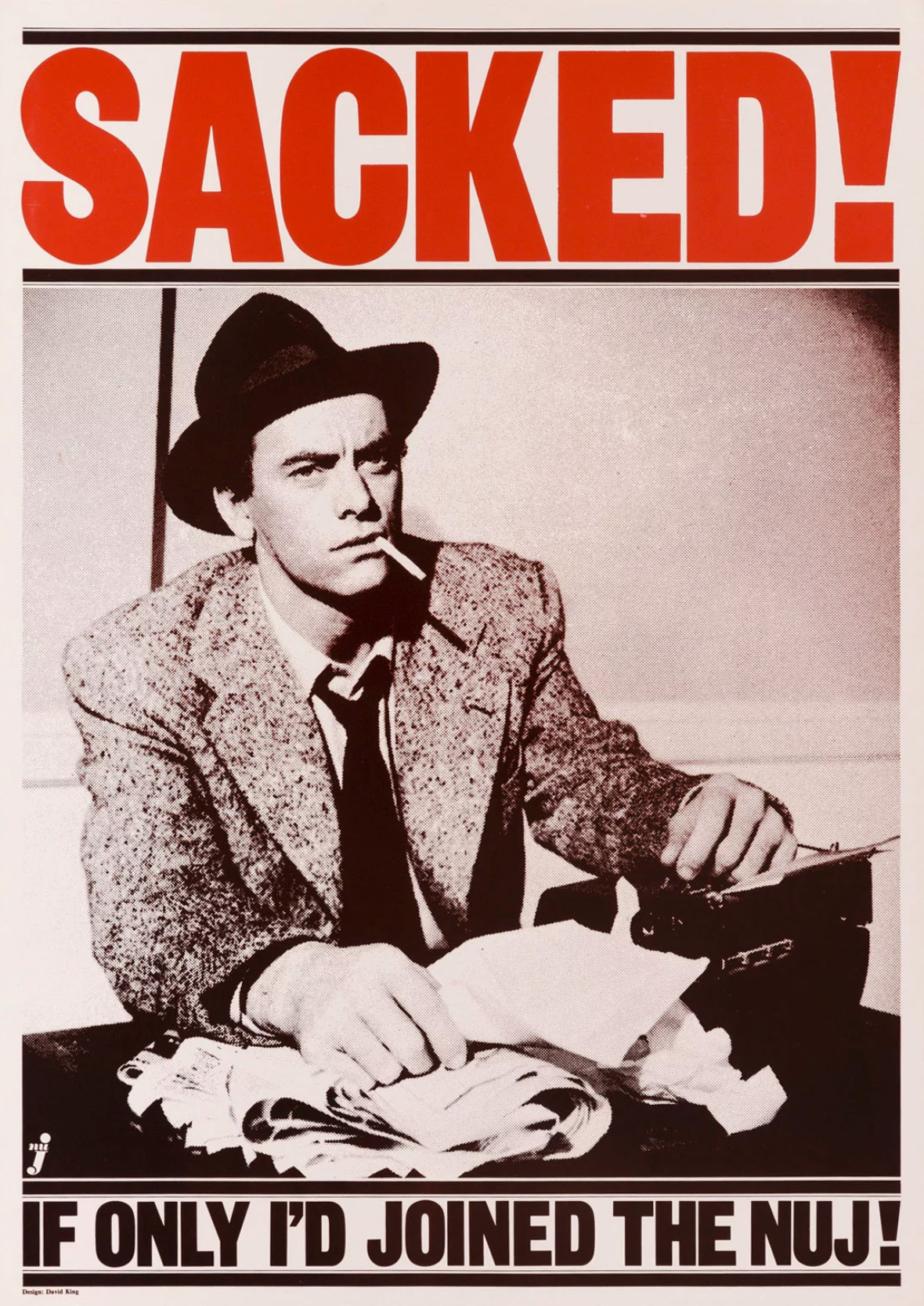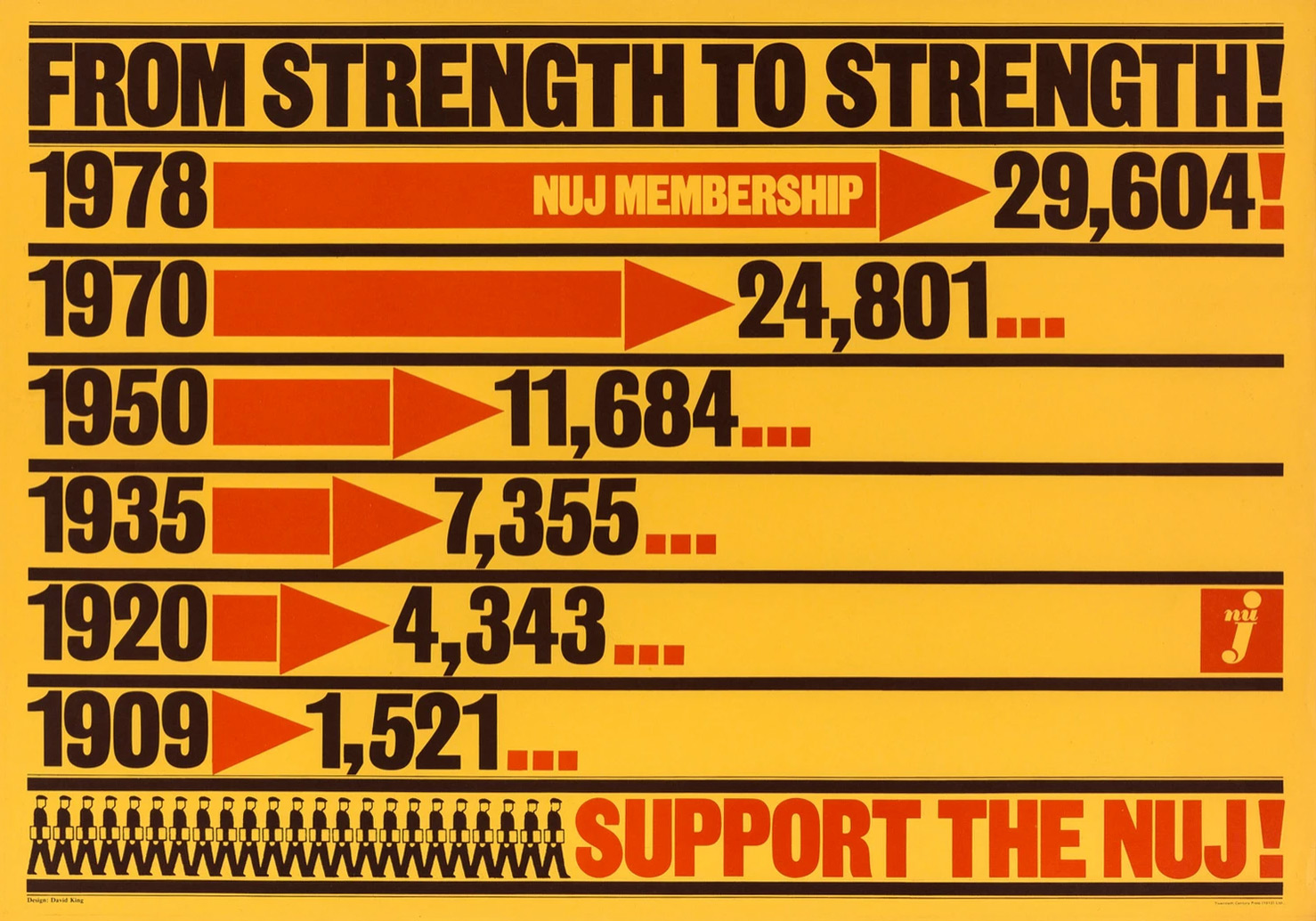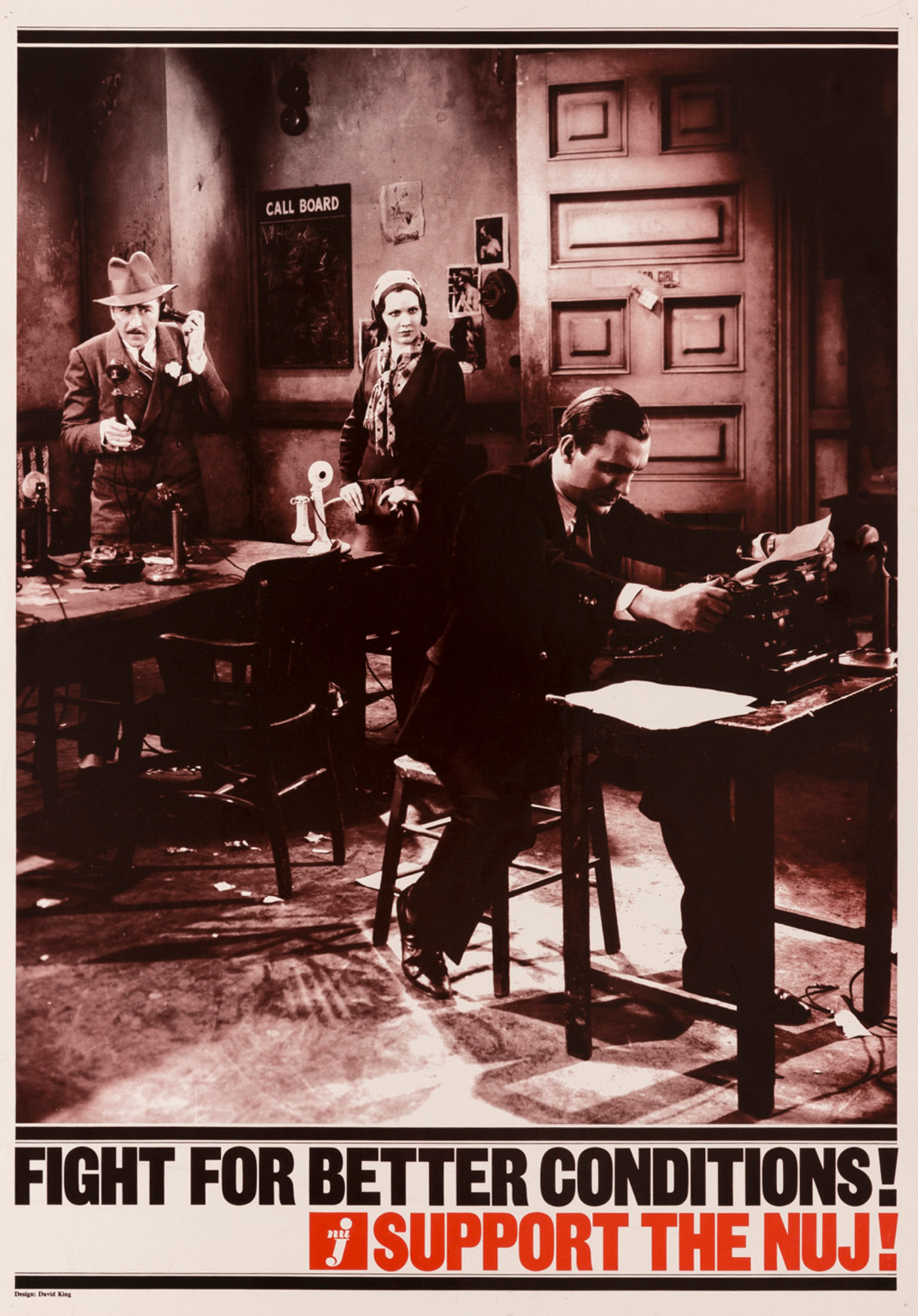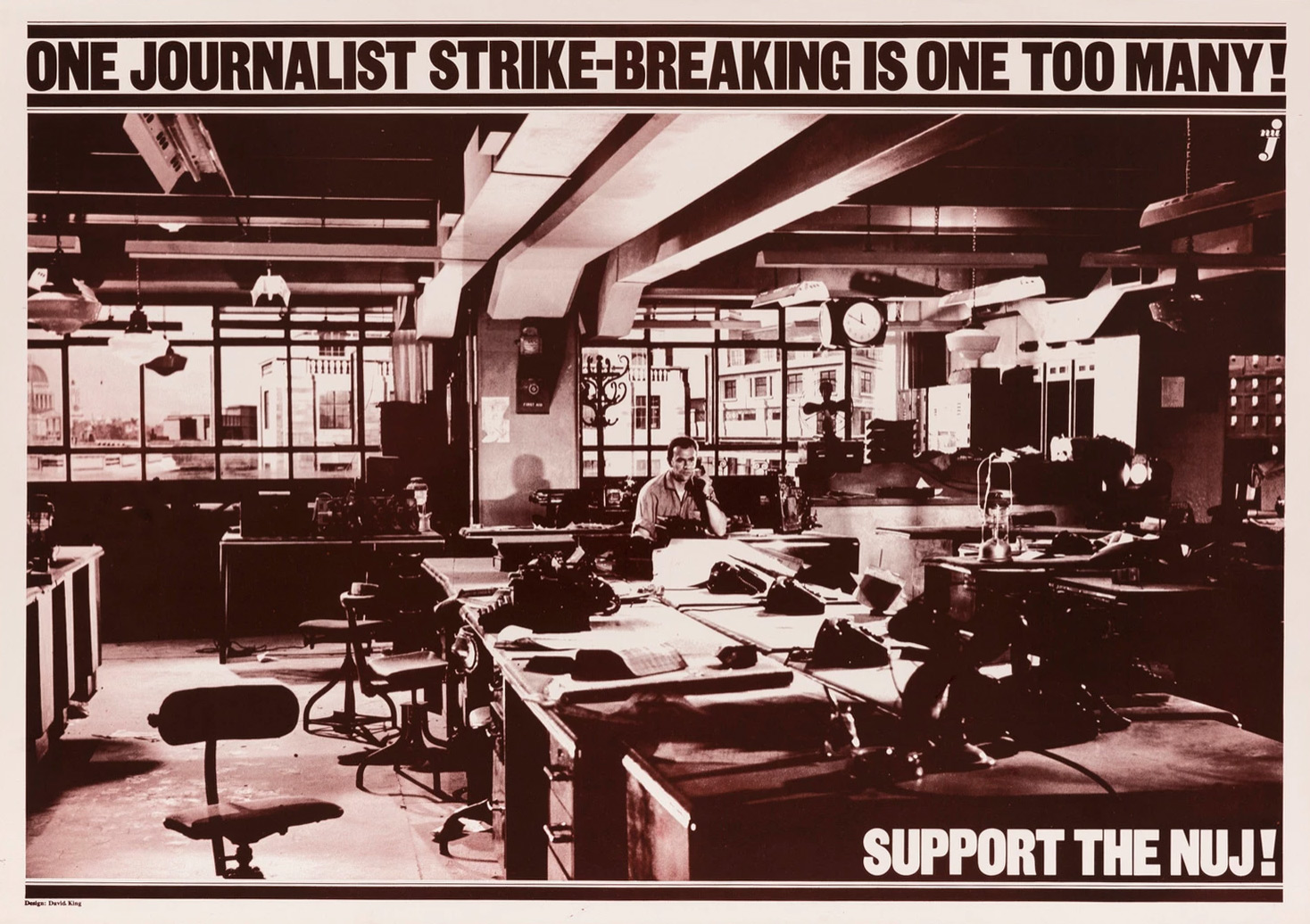Movie Images For NUJ Posters

In 1978, David King designed a trio of typographic posters for the National Union of Journalists focused on strike action and membership. In visual terms, it was a highly successful collaboration. The posters’ massive red and black letters on bright yellow backgrounds packed enormous punch as an expression of the union members’ collective resolve and will (see “Political Posters” on this website).

Around 1980, the NUJ asked King to create a second series. As with the earlier “From Strength to Strength!” poster, the essential message is to support the NUJ and each of the four posters, designed in landscape format, expresses an essential principle of union membership and solidarity. A fifth portrait-format poster shares some obvious similarities with the quartet, including the pairing of thick and thin rules, but it doesn’t carry the “Support the NUJ” line and may have been commissioned and conceived separately, and possibly later. In a set of 35mm slides of the posters, King numbered it after the others.
In contrast to King’s more typographic posters, the image-led style of these pieces suggests both magazine layouts – they could almost be feature opening pages – or magazine advertising spreads. Images dominate the poster space and King pushes concise copy lines out to the edges. The photographs are either film stills or, in the case of “Sacked!”, a film publicity shot. While all five posters bear King’s design credit, no information is provided about the sources of the images, necessitating a little detective work.


The easiest pictures to identify were the two featuring Humphrey Bogart in Deadline USA (dir. Richard Brooks, 1952), where he plays the managing editor of a large city newspaper. The images work perfectly with the slogans: you can hear Bogart’s tough guy lisp. This is a live wire not to be messed with. The animated trio crusading for better conditions are Adolphe Menjou, Mary Brian and Pat O’Brien in The Front Page (dir. Lewis Milestone, 1931).

The fourth photo was harder to crack. The dome of St Paul’s Cathedral confirmed the location as London, making this Fleet Street, while the oil lamp on the desk in a room that ought to be well lit suggested electrical failure if not calamity. Then I remembered the British disaster film The Day the Earth Caught Fire (dir. Val Guest, 1961), which I saw in my youth. The lone newsman is the film’s star, Edward Judd. The deserted newsroom – clearly not a set – is in the old art deco Daily Express Building. This is the cheekiest reworking of an image’s original meaning. Judd is grappling manfully with global catastrophe – a world shifted off its axis by two atomic explosions – not opting out of righteous industrial action.

King most likely obtained the four pictures from The Kobal Collection. He had used Kobal’s photo library when he worked at The Sunday Times Magazine and, as a collector himself, he admired this hoard of Hollywood photos. The similarly uncredited fifth image, possibly not supplied by Kobal, shows the Canadian actor John Ireland, who plays a journalist in the film noir All the King’s Men (dir. Robert Rossen, 1949).
King chose the pictures with his customary acumen and he gave them a sizzling graphic charge by printing them as red and black duotones. Black and white would have been colder and flatter. Lines of condensed grotesque capitals offset the images with total clarity. King’s success can be gauged from a comparison with another NUJ poster, mistakenly attributed to him, that emerged for sale on ebay, alongside four shown here. Titled “Do Men Call the Tune in Your Office?” and based on a film still, the unknown poster is most likely an addition to the series by someone else. The type’s scaling against the image is clumsy and there is a weedy exclamation mark unlike any that King – an exclamation mark aficionado – ever used. The design appears to be uncredited and it wasn’t included among the posters he archived in his studio.
I contacted the NUJ’s general secretary, Michelle Stanistreet, to ask about the posters. Forty years after they were circulated to union representatives for display in the workplace, Stanistreet knows the series and says she has always loved them. She has copies in her office and other NUJ colleagues also view the posters with “nostalgia and affection” – a tribute to the urgency, assurance and visual wit with which they delivered their messages.
Posters courtesy of the Estate of David King
Poster images courtesy of Twentieth-Century Poster Collection, Department
of Typography & Graphic Communication, University of Reading
